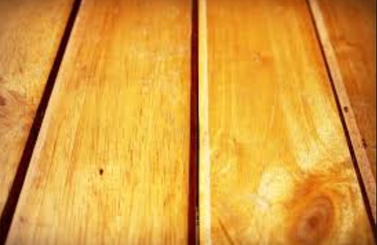Tips for timber floor polishing

Timber floors are finished in two different ways but the oil based resins is the most popular option. Some people settle for polyurethane floor finishes which are available single or two pack formulations. Care has to be taken with this type of finish because it is very toxic and the area should be well ventilated.
Choosing the type of finish
Floor finishes are available in matt, semi-gloss and gloss finishes. High gloss finishes look awesome but is recommended for light traffic floors. When used in floors with heavy traffic, it highlights imperfections and scratches.
Prior cleaning
After sanding the floor, oil in the timber is lifted to the surface. Before polishing your floor, you need to use a clean piece of cloth with enough methylated spirit to wipe the whole surface.
First Polish application
Choose the best polish considering your choice and preference and using a brush, apply the first coat of polish on the edges of the floor. Use a roller to apply a coat that is even over the whole floor. You need to do this along the grain. For the best results, let the polish dry for at least 8 hours. However, the more time it takes to dry the better the outcome.
Second coat
Use a 120 grit sandpaper to sand the floor lightly. This removes all roughness brought about by the first coat that raises the timber grains. Clean the sanding dust from the floor completely and apply a second coat. The floor should be left to dry overnight.
Third coat
This might or might not be necessary. It is important to allow three days or more for the whole process. After applying the final coat, avoid walking on the floor.
You can do this on your own or seek the services of a timber floor polishing expert. Depending on what you have at hand, there has to be a favorable and cost effective option between the two.
Choosing the type of finish
Floor finishes are available in matt, semi-gloss and gloss finishes. High gloss finishes look awesome but is recommended for light traffic floors. When used in floors with heavy traffic, it highlights imperfections and scratches.
Prior cleaning
After sanding the floor, oil in the timber is lifted to the surface. Before polishing your floor, you need to use a clean piece of cloth with enough methylated spirit to wipe the whole surface.
First Polish application
Choose the best polish considering your choice and preference and using a brush, apply the first coat of polish on the edges of the floor. Use a roller to apply a coat that is even over the whole floor. You need to do this along the grain. For the best results, let the polish dry for at least 8 hours. However, the more time it takes to dry the better the outcome.
Second coat
Use a 120 grit sandpaper to sand the floor lightly. This removes all roughness brought about by the first coat that raises the timber grains. Clean the sanding dust from the floor completely and apply a second coat. The floor should be left to dry overnight.
Third coat
This might or might not be necessary. It is important to allow three days or more for the whole process. After applying the final coat, avoid walking on the floor.
You can do this on your own or seek the services of a timber floor polishing expert. Depending on what you have at hand, there has to be a favorable and cost effective option between the two.